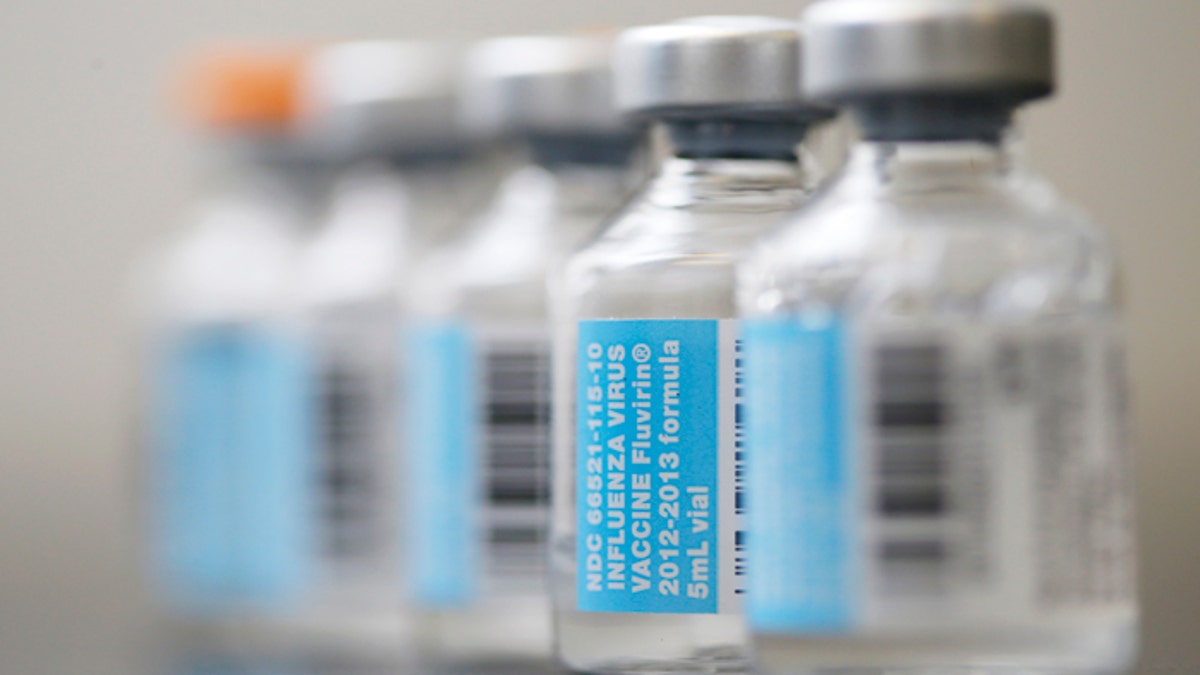
Vials of flu vaccine. (AP Photo/Matt Rourke)
This season's flu shot seemed to do little to protect people over 65 from the worst and most dominant flu strain spreading around, a small government study found. Vaccinated people in that age group had only a 9 percent lower chance of going to the doctor with flu symptoms from the main virus than people who didn't get the shot.
The vaccine was much better at protecting younger people.
Q: If the flu shot did such a poor job for older folks, why should they get it?
A: Government doctors and other health experts say it's better than nothing. And some scientists at the Centers for Disease Control and Prevention think it's possible that even this less effective vaccine may have lessened symptoms. But they don't know that for sure.
Q: How well did the vaccine work for younger age groups?
A: It offered "moderate" protection, the CDC says. For all ages who were vaccinated, there was a 56 percent chance of avoiding getting sick with the flu from any of the three strains in circulation. Generally a flu vaccine is considered pretty good if it's more than 60 percent effective.
Q: Why didn't the vaccine do a better job this year?
A: Scientists don't know. But it is much harder to make an effective vaccine against ever-shifting flu viruses than for diseases like measles, polio and diphtheria. Vaccines are generally 90 to 95 percent effective for those other diseases.
Q: Why was the shot especially weak at protecting older people?
A: Older, worn-out immune systems have a harder time responding to flu vaccines. Protection for those over 65 is considered good if they have a 30 or 40 percent lower chance of getting sick enough to see the doctor. This year, the vaccine provided about 27 percent protection against all three strains - but again, for the most dominant virus it was only 9 percent effective. On the upside, for people in their 50s and early 60s, protection against the worst virus was actually 50 percent.
Q: Can't we make a better vaccine?
A: Researchers are working on it. There is a higher-dose version for older people, but it's not clear how widely available it was and the study of vaccine effectiveness was too small to show whether it made a difference.
